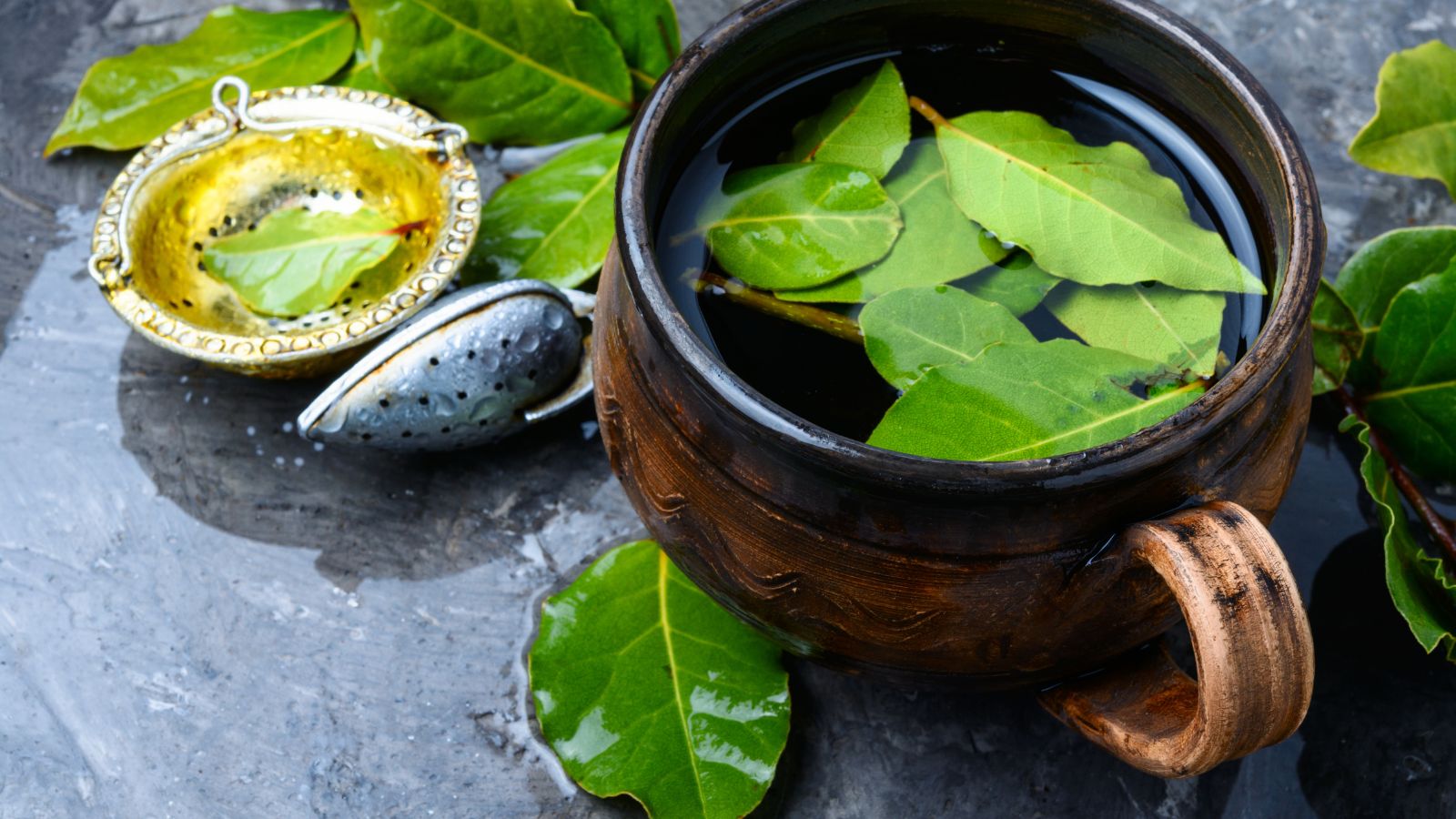
Bay Leaves in Spanish: Meaning, Uses, and Health Benefits
Photo Credit: Canva Pro
Bay leaves, which are called "hojas de laurel" in Spanish, are used in many kitchens around the world. They make food taste better and are good for you too.
This post will explain what bay leaves are, what they're called in different places, how to use them, their health benefits, and where to get good ones like the ones from FullyHealthy. Let's look around!
🌿 🔥 Click Here to Get Simply Organic Bay Leaves! Add depth and aroma to soups, stews, and sauces!
What Are Bay Leaves in Spanish?
Photo Credit: Canva Pro
Literal Translation and Regional Usage
When you speak Spanish, you call bay leaves "las hojas de laurel." You can use "una hoja de laurel" to talk about a single "laurel" leaf. This herb is used a lot in Spain and Latin American cooking. It is often added to meat dishes, broths, and soups.
-
Translation: “Bay leaf” in Spanish is “hoja de laurel” (feminine noun)
-
Plural use: “Las hojas de laurel” is used when referring to more than one
-
Common ingredients paired with bay leaves: Ajo (garlic), sal (salt), agua (water), aceite de oliva (olive oil), and onion
-
Typical cooking method: Simmer en una large pot with ingredients like las patatas and spices, then remove before serving
The True Bay Leaf "Hoja De Laurel": Laurus Nobilis
The Laurus nobilis plant is where the real bay leaf comes from and is used in cooking. It comes from the Mediterranean and is thought to be the only real bay leaf for cooking. Other bay leaf varieties may alter the flavor profile significantly and, in some cases like Pimenta racemosa, are not intended for culinary use and may cause adverse effects if ingested.
-
Botanical source: Laurus nobilis, also called el laurel or sweet bay
-
Safe for cooking: Recognized as the authentic bay leaf for flavor and safety
-
Used in herb bundles: Often added to a bouquet garni with thyme, parsley, and other herbs
-
Cultural relevance: Found in Spanish and other Mediterranean recipes; the word "laurel" has similar usage in other languages
What Is Another Name for Bay Leaves?
Photo Credit: Canva Pro
Common Synonyms in English and Spanish
In different parts of the world and languages, bay leaves are called different things. This could be hard to understand when shopping or following recipes. If you know the synonyms, you can be sure you're using the right ingredient.
-
In English: Common names include bay leaf, sweet bay, and bay laurel
-
In Spanish: Terms like hoja de laurel, el laurel, and region-specific names like “laurel mexicano” may appear
-
Clarification: These names usually refer to Laurus nobilis, but always check the source when buying
Bay Leaf Varieties Around the World and Other languages
Not all bay leaves are the same. Several plants are sold under the name “bay leaf,” but only one is suitable for culinary use. Understanding the differences helps avoid unwanted flavors or effects.
-
Turkish Bay Leaf (Laurus nobilis): The true and safe bay leaf for cooking
-
California Bay Leaf (Umbellularia californica): Stronger, sometimes bitter flavor
-
Indian Bay Leaf (Cinnamomum tamala): Tastes more like cinnamon, not a substitute
-
West Indian Bay Leaf (Pimenta racemosa): Primarily used in cosmetic applications and aromatic products like bay rum; not intended for culinary use
-
Indonesian Bay Leaf (Syzygium polyanthum): Popular in Southeast Asia but different in flavor
What Are the Benefits of Bay Leaf?
Photo Credit: Canva Pro
Nutritional and Medicinal Properties
Bay leaves are good for you and taste great. They give you antioxidants and other healthy compounds whether you use them in el caldo, teas, or oils.
-
Rich in nutrients: Vitamins A, B6, and C; minerals like calcium and iron
-
Active compounds: Contains eugenol, linalool, and tannins with health-boosting effects
-
Health functions: May exhibit antioxidant, anti-inflammatory, antifungal, and digestive-modulating properties based on preliminary in vitro and animal studies.
-
Other uses: Can be infused in aceite de oliva for topical benefits
Top 5 Evidence-Based Health Benefits
When used right, bay leaves help with digestion, the immune system, and other things. People often boil a leaf in water to make tea or add it to food while it's cooking and take it out before eating.
-
Digestive aid: Eases bloating, gas, and indigestion
-
Blood sugar control: Preliminary studies suggest bay leaf extract may assist in modulating blood glucose levels, but human clinical evidence remains limited.
-
Immunity booster: Contain trace amounts of vitamins like A and C, though culinary use provides minimal nutritional contribution.
-
Respiratory relief: Traditionally used for steam inhalation, but scientific support for efficacy in respiratory relief is limited.
-
Calming effects: The scent can reduce anxiety and support relaxation
FullyHealthy: High-Quality Bay Leaves and More
Photo Credit: Canva Pro
Simply Organic Bay Leaf Product Overview
There is a safe and reliable option for organic bay leaves at FullyHealthy. The 4 grams of Simply Organic Bay Leaf are great for cooking and using as herbs. If you want to serve soups or sauces, take it out before you serve them.
-
Product name: Simply Organic Bay Leaf, 4g
-
Form: Whole leaves; remove after boiling
-
Prep method: Add during simmer, luego continuación se añade agua
-
Quantity suggestion: 1–2 leaves per dish
Why Shop at FullyHealthy?
People with special dietary needs, like AIP, gluten-free, and allergen-free, can count on FullyHealthy. Products like organic spices and pantry staples that have been hand-picked and reviewed are sold in their store.
-
Focus: Specializes in clean-label health foods
-
Product assurance: Based on expert and customer review
-
User-friendly: Easy to find products by need or diet
-
Quality sourcing: Prioritizes sustainability and ethical brands
-
Bonus: Free shipping over qualifying quantity purchases
Final Thoughts
Bay leaves, also known as las hojas de laurel, are used in many kitchens around the world. They make any dish taste better, whether you put one in a simmering pan, mix them with cumin or basil, or add them to a stew.
The best way to use them is with potatoes, tomatoes, stock, or even rice. When you mix bay leaves with herbs like cilantro, the smell and taste get better.
FAQs
Can I use bay leaves with cumin and basil?
Yes, cumin, basil, and bay leaves combine well in Mediterranean or Latin dishes.
Do bay leaves go in stew or pan first?
Always add to the stew or pan while simmering, then remove before serving.
Can I add bay leaves to tomatoes and stock?
Yes. Use them with tomatoes, stock, and herbs for deeper flavor.
Is cilantro good with bay leaves?
Yes. Cilantro and bay leaves work well in soups and rice dishes.
Can bay leaves be used with potatoes?
Yes. Add to boiling potatoes for aroma, then remove before mashing or roasting.

Leave a comment